
Find Help
More Items From Ergsy search
-

How is the bubonic plague transmitted?
Relevance: 100%
-

Is the bubonic plague contagious between humans?
Relevance: 98%
-

What is Bubonic Plague?
Relevance: 97%
-

What is the bubonic plague?
Relevance: 95%
-

Are there vaccines for the bubonic plague?
Relevance: 92%
-

Can the bubonic plague be prevented?
Relevance: 91%
-
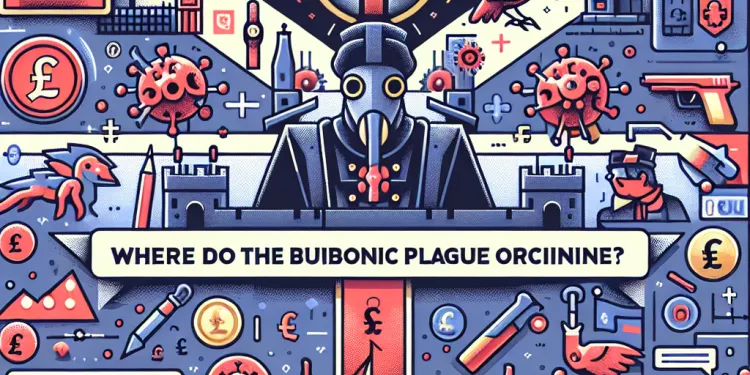
Where did the bubonic plague originate?
Relevance: 86%
-
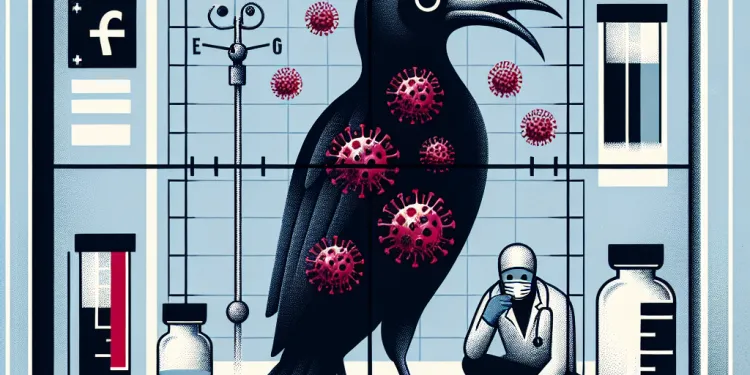
What are the symptoms of the bubonic plague?
Relevance: 86%
-

How was the bubonic plague controlled historically?
Relevance: 86%
-

How can the bubonic plague be treated?
Relevance: 85%
-

Did the bubonic plague affect only Europe?
Relevance: 84%
-

What is the mortality rate of untreated bubonic plague?
Relevance: 82%
-

What advancements have been made in understanding the bubonic plague?
Relevance: 80%
-

Can the bubonic plague become resistant to antibiotics?
Relevance: 80%
-
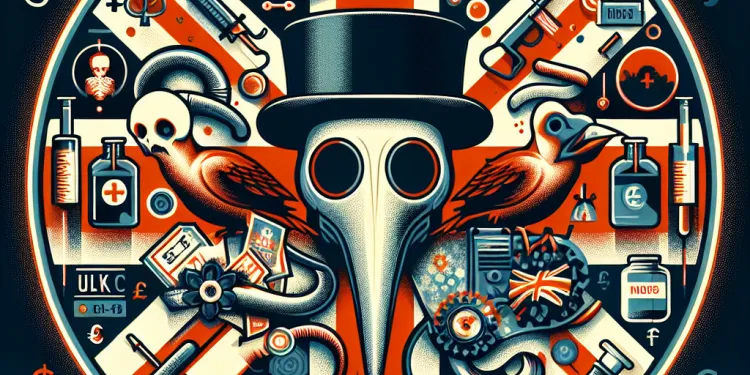
What historical event is the bubonic plague known for?
Relevance: 78%
-

Are there modern outbreaks of bubonic plague?
Relevance: 62%
-
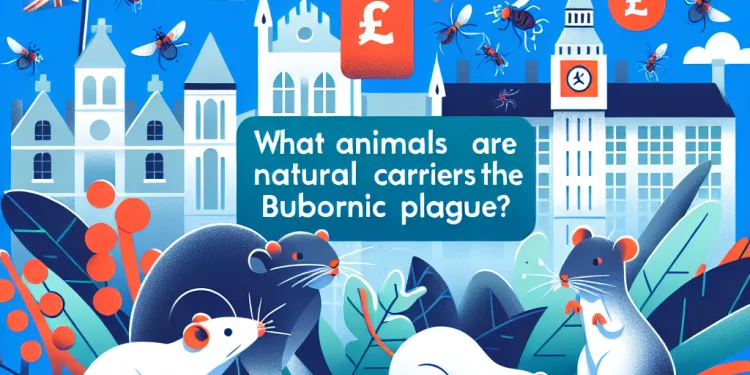
What animals are natural carriers of the bubonic plague?
Relevance: 62%
-

What is a bubo?
Relevance: 46%
-

What public health measures are important for managing the plague?
Relevance: 44%
-

Are new variants more transmissible?
Relevance: 37%
-

Is the bubonic plague still a global health threat?
Relevance: 32%
-
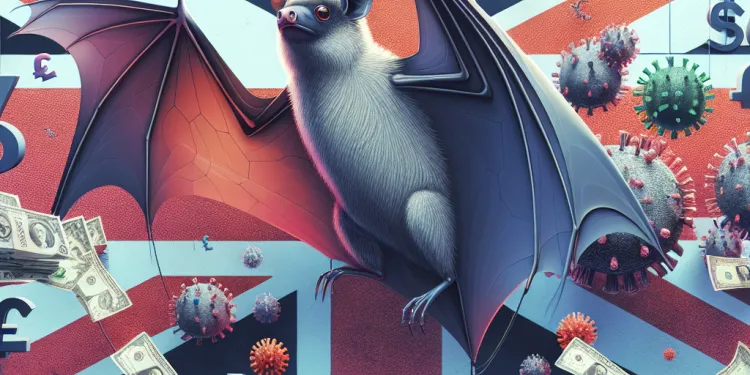
What role do fruit bats play in Nipah Virus transmission?
Relevance: 30%
-

How is blood screened to prevent disease transmission?
Relevance: 29%
-
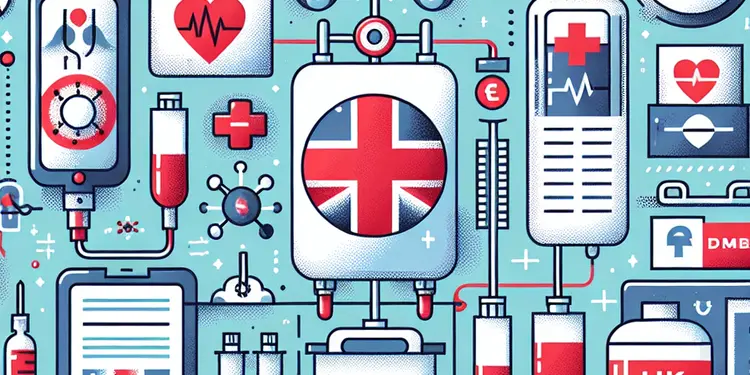
What measures are taken to prevent disease transmission in blood transfusions?
Relevance: 28%
-
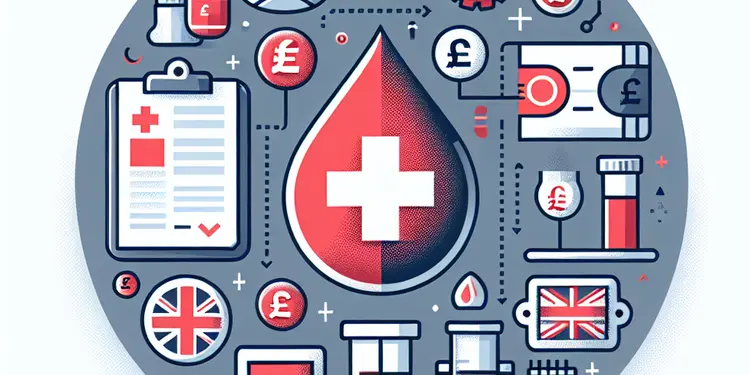
Why is blood donation history important in preventing disease transmission?
Relevance: 24%
-
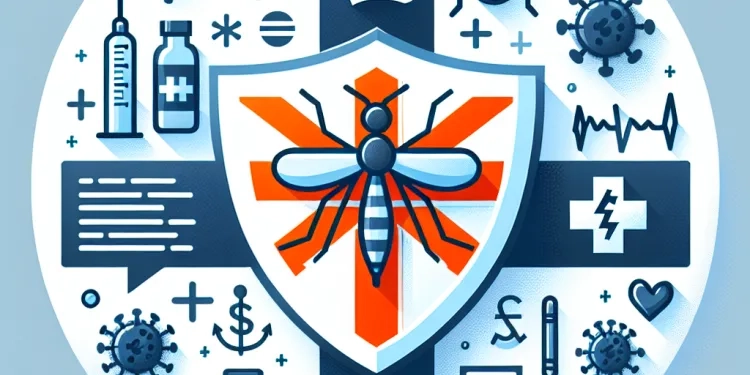
What measures are in place to prevent Zika virus transmission in the UK?
Relevance: 18%
-

How is Nipah Virus transmitted?
Relevance: 14%
-

How is HIV transmitted?
Relevance: 14%
-

Can Nipah Virus be transmitted from person to person?
Relevance: 14%
-

How is the Zika virus transmitted?
Relevance: 13%
-

How is Chikungunya virus transmitted?
Relevance: 13%
-
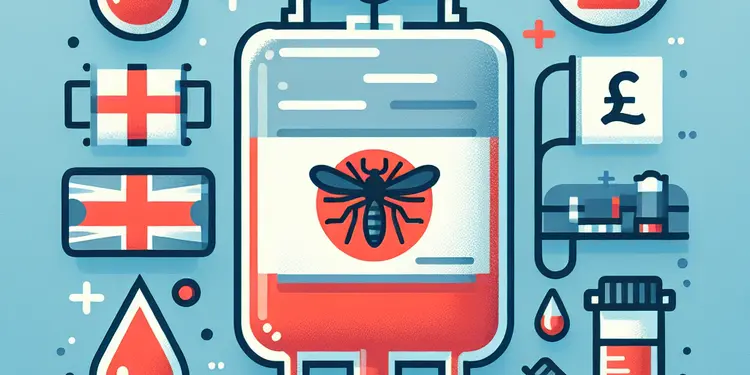
Can Dengue fever be transmitted through blood transfusions?
Relevance: 13%
-

How does the bacteria Yersinia pestis survive between outbreaks?
Relevance: 13%
-

Why do some variants spread more easily?
Relevance: 13%
-

How is Rubella transmitted?
Relevance: 13%
-

Are there any parasites that can be transmitted through blood transfusions?
Relevance: 13%
-

How is measles transmitted?
Relevance: 13%
-
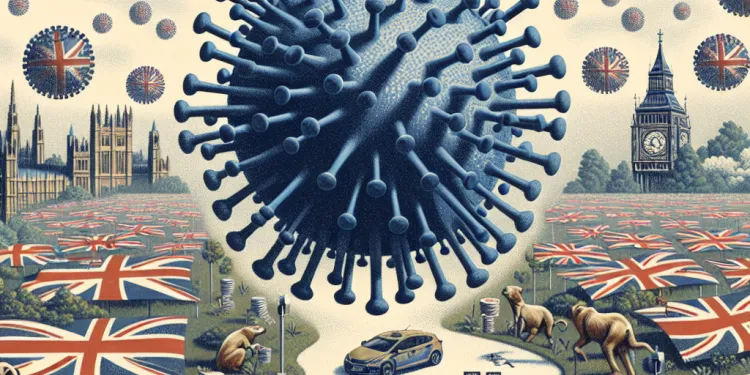
How is West Nile Virus transmitted?
Relevance: 13%
-

What diseases can be spread by blood transfusions?
Relevance: 13%
-

Is it safe for a partner of someone with HIV to have children?
Relevance: 13%
Bubonic Plague Transmission: An Overview
Bubonic plague, historically known as the “Black Death,” is a severe infectious disease caused by the bacterium Yersinia pestis. This disease has been responsible for some of the deadliest pandemics in human history. Understanding its modes of transmission is critical for public health and safety. In modern times, although outbreaks are rare, knowledge about how the bubonic plague is transmitted remains crucial for preventing future epidemics.
Transmission Through Flea Bites
The primary method of transmission for the bubonic plague is through the bite of infected fleas. These fleas often live on small mammals such as rats, mice, and squirrels. The bacterium Yersinia pestis thrives in the blood of these animals, and when a flea bites an infected animal, it ingests the bacteria. When these fleas then bite humans or other animals, they transmit the bacterium, causing infection.
Once a flea is infected with Yersinia pestis, the bacteria multiply in its gut. This can block the flea’s digestive tract, causing it to regurgitate the bacteria into the bite wound, thereby infecting the host. This efficient transmission mechanism enables the rapid spread of the plague among populations of humans and animals.
Transmission Through Contact
Bubonic plague transmission can also occur through direct contact with contaminated bodily fluids or tissues. This typically happens in the context of handling animals or humans that have died from the plague. People who handle these infected carcasses without proper protective measures are at risk of contracting the disease. Additionally, hunters and those who prepare animal skins can also be exposed to the bacteria, particularly if they come into contact with infected animals.
Airborne Transmission
While the bubonic form of the plague is not primarily transmitted through the air, other forms, such as pneumonic plague, can spread via respiratory droplets. If an individual with pneumonic plague coughs or sneezes, they can release infected droplets into the air, which may be inhaled by those nearby. This form of transmission is particularly concerning because it does not rely on fleas as a vector, allowing for rapid person-to-person spread, especially in crowded environments.
Prevention and Control Measures
Modern sanitation, pest control, and antibiotics have significantly reduced the risk of plague outbreaks. In the UK and other parts of the world, health authorities monitor animal populations for signs of plague and maintain vigilance for potential human cases. Avoiding contact with wild animals, using flea control products on pets, and wearing protective clothing when handling potentially infected animals are effective methods for reducing transmission risk.
In conclusion, while the bubonic plague is no longer the threat it once was, understanding its transmission can help prevent future outbreaks. Public awareness and proper preventive measures are key to controlling this ancient but formidable disease.
How Bubonic Plague Spreads: Easy Guide
Bubonic plague, also known as the “Black Death,” is a very serious disease. It is caused by germs called Yersinia pestis. This disease caused many people to die long ago. Knowing how it spreads helps keep us safe. Today, outbreaks of this disease are not common, but it's still important to know how it spreads so that we can stop future problems.
How Flea Bites Spread the Disease
The main way bubonic plague spreads is through flea bites. Fleas are tiny insects that can live on animals like rats, mice, and squirrels. The germs Yersinia pestis live in the blood of these animals. When a flea bites a sick animal, it takes in the germs. If that flea then bites a person or another animal, it can pass on the germs and cause illness.
After a flea gets the germs, they grow in its gut. This can block the flea’s stomach, making it spit the germs into a new bite. This way, the disease spreads quickly to people and animals.
Spread Through Touch
Bubonic plague can also spread when someone touches infected blood or body parts. This can happen if people handle sick or dead animals or people without using protection. Hunters or people who work with animal skins might touch these germs if they handle sick animals.
Spread Through the Air
The bubonic plague usually does not spread through the air. However, another type, called pneumonic plague, can. If a person with pneumonic plague coughs or sneezes, tiny drops with germs can get into the air. If someone nearby breathes in these drops, they can get sick. This is especially dangerous in crowded places.
How to Prevent and Control the Plague
Today, we have good ways to keep the plague away, like cleanliness, pest control, and medicines. In the UK and other countries, health workers watch animals to see if they have the plague and are ready to help people who might get sick. To stay safe, don't touch wild animals, use flea controls on pets, and wear protective clothes if working with sick animals.
In short, the bubonic plague is not as big a problem as it was long ago. By knowing how it spreads, we can help stop it. Understanding the disease and using the right safety steps are important to keep everyone safe.
Frequently Asked Questions
What is the primary way the bubonic plague is transmitted?
The primary way the bubonic plague is transmitted is through the bite of an infected flea.
Can humans catch the bubonic plague from animals?
Yes, humans can catch the bubonic plague from handling an infected animal or being bitten by an infected flea from an animal.
Which animals are common carriers of the fleas that spread the bubonic plague?
Rodents, such as rats, mice, and squirrels, are common carriers of the fleas that spread the bubonic plague.
Are domestic pets at risk of transmitting the plague?
Yes, domestic pets such as cats and dogs can become infected with the plague and potentially spread it to humans.
Is it possible to contract the bubonic plague from another person?
Direct person-to-person transmission of bubonic plague is rare, but respiratory droplets can spread the pneumonic form of plague.
What are the symptoms of bubonic plague transmission through flea bites?
Symptoms include swollen and painful lymph nodes, fever, chills, headache, fatigue, and muscle aches.
Where are plague-infected fleas commonly found?
Plague-infected fleas are commonly found in rural and semi-rural rodent-infested areas.
Can the plague bacteria survive in the environment outside a host?
Yes, Yersinia pestis, the bacteria that causes plague, can survive in the environment for a short period, but direct environmental transmission is uncommon.
How does controlling rodent populations help prevent plague transmission?
Controlling rodent populations reduces the number of fleas, thereby decreasing the risk of human plague transmission.
What measures can be taken to prevent flea bites in plague-prone areas?
Use insect repellent, wear long sleeves and pants, and avoid areas with high rodent activity to prevent flea bites.
Can humans transmit the bubonic plague to fleas?
No, humans generally do not transmit bubonic plague back to fleas. Fleas acquire the bacteria from infected animals.
Does the bubonic plague exist today?
Yes, the bubonic plague still exists today but is rare and treatable with modern antibiotics.
What role do fleas play in the transmission of the bubonic plague?
Fleas act as vectors that carry the plague bacteria from infected rodents to humans.
Can rural areas be more susceptible to bubonic plague outbreaks?
Yes, rural areas with larger rodent populations are more susceptible to plague outbreaks.
Are there any historical pandemics caused by the bubonic plague?
Yes, the Black Death in the 14th century was a massive pandemic caused by the bubonic plague.
Is there a vaccine available for the bubonic plague?
There is no widely used vaccine for the bubonic plague; prevention focuses on controlling rodent populations and avoiding flea bites.
What is the treatment for someone infected with the bubonic plague?
Immediate treatment with antibiotics such as streptomycin, gentamicin, doxycycline, or ciprofloxacin is essential.
Can bites from other insects transmit the bubonic plague?
Apart from fleas, bites from other insects are not known to transmit the bubonic plague.
Has the bubonic plague been eradicated?
No, the bubonic plague has not been eradicated, but cases are rare and manageable with treatment.
How quickly do symptoms appear after transmission by flea bite?
Symptoms of the bubonic plague typically appear 2 to 6 days after being bitten by an infected flea.
How does the bubonic plague spread?
The bubonic plague is spread by fleas. A flea can bite an animal, like a rat, that has the plague. Then, the flea can bite a person and give them the plague.
Good tools to help you understand:
- Ask someone to read with you.
- Use a dictionary to look up hard words.
- Watch videos about the bubonic plague.
You can catch the bubonic plague from a flea bite. Fleas are tiny bugs that can have the plague.
Can people get the bubonic plague from animals?
Yes, sometimes people can catch the bubonic plague from animals. The plague is a very old and serious illness. It can spread from animals to people through fleas that bite. Fleas are tiny bugs. The plague can make you very sick, so it's important to be careful.
If you have a pet or are around animals, you can do a few things to stay safe:
- Keep your pets free from fleas. You can ask a vet for help.
- Avoid touching wild animals.
- Wash your hands after handling animals.
- If you feel sick, tell an adult and visit a doctor.
Pictures can help you understand how to stay safe. Ask someone to explain if you have questions.
Yes, people can get the bubonic plague if they touch an animal that is sick or if a sick flea from an animal bites them.
Which animals often carry fleas that spread the plague?
Animals like rats, mice, and squirrels often have bugs called fleas. These fleas can give people a very bad sickness called the bubonic plague.
Can my pet give me the plague?
Here is a simpler way to ask the question: Can pets like cats and dogs make us sick with the plague?
If you need help understanding or reading this, you can:
- Ask a friend or family member to read it with you.
- Use a text-to-speech tool that reads the words out loud.
- Look at pictures or videos about pets and the plague.
Yes, pets like cats and dogs can get a sickness called the plague. They can sometimes make people sick too.
Can you catch the bubonic plague from someone else?
The bubonic plague is a very serious illness.
It is usually spread by fleas that bite you. Fleas often live on rats.
It is rare for people to catch it from other people.
If someone has the plague, doctors should take care of them to stop it from spreading.
If you want to learn more or need help, you can ask a doctor.
It is not common for people to give each other bubonic plague. But if someone has the pneumonic form, they can spread it through the air when they breathe, cough, or sneeze.
People can use simple tools to help understand this information better, like:
-Talking to someone they trust for help with big words.
-Using a dictionary or the internet to look up words they don't know.
What happens when fleas give you bubonic plague?
This is what to look out for:
- Big bumps on your body. They might feel sore.
- Feeling very hot or cold; this is called a fever or chills.
- Feeling very tired and weak.
- Head hurting a lot; this is called a headache.
If you feel these things, tell a grown-up or a doctor right away.
Signs that you might be sick are:
- Swollen and sore lumps in your neck, armpits, or groin.
- Feeling very hot or having a fever.
- Feeling very cold and shivering.
- Head hurting a lot.
- Feeling very tired.
- Sore muscles.
It can help to talk to someone about how you feel. You can also write down when you feel sick.
Where can you find fleas with the plague?
Fleas with plague can often be found in places where there are lots of mice and rats, like in the countryside or near small towns.
Can plague bacteria live outside the body?
Plague bacteria are tiny germs that make people sick. Can they live outside the body, like in the air, water, or soil?
These germs do not live long outside a person or animal. They need to be inside to stay alive.
To learn more, you can:
- Watch a video about germs and how they spread.
- Talk to a teacher or adult about how to stay safe from germs.
- Use pictures or diagrams to understand more about bacteria.
Yes, Yersinia pestis is the germ that makes people sick with the plague. It can live outside for a little while, but it doesn't often spread this way.
How does stopping too many rats and mice help stop the spread of plague?
When there are fewer rats and mice, there is less chance for the plague to spread. The plague is a bad sickness that can be passed by fleas that live on animals like rats and mice.
Here are some easy ways to stop rats and mice from spreading the disease:
- Keep your home clean and tidy. This makes it hard for rats and mice to live there.
- Use traps to catch any rats or mice you see.
- Remove things they can eat, like crumbs and open food.
- Close up holes where they might get in.
If you need help, ask a grown-up, like a parent or teacher. You can also talk to a pest control expert. They know how to keep homes safe from rats and mice.
Keeping the number of rodents, like mice and rats, low means there will be fewer fleas. This helps stop diseases from spreading to people.
How can we stop flea bites in places where there is a risk of plague?
Here are some easy steps:
- Wear long clothes to cover your skin.
- Use bug spray to keep fleas away.
- Keep your home and pets clean.
- Stay away from wild animals.
You can also ask a grown-up for help with these steps.
To stop flea bites, use bug spray, wear long shirts and pants, and stay away from places with lots of mice and rats.
Can people give the bubonic plague to fleas?
This question is asking if people can make fleas sick with the bubonic plague. The bubonic plague is a disease. Look at pictures and videos to help understand. Use fingers to point to and count words. Ask someone to explain big words.
No, people usually do not give the bubonic plague back to fleas. Fleas get the germs from sick animals.
Is the bubonic plague still around today?
The bubonic plague is a disease. Some people call it "the Black Death." It was very bad a long time ago.
But yes, it still exists today. Some people in the world can still get it. Doctors can treat it with medicine, so it is not as dangerous now.
If you want to learn more, you can:
- Ask your doctor or nurse for information.
- Look at websites that teach about health, like the CDC or WHO.
Yes, the bubonic plague is still around today. But it doesn't happen very often, and doctors can fix it with medicine.
How do fleas help spread the bubonic plague?
Fleas are tiny bugs that can carry a bad germ called plague. They pick it up from sick rats and can give it to people.
Can the bubonic plague spread more in the countryside?
Yes, places in the countryside with many mice and rats are more likely to have plague outbreaks.
Has the bubonic plague ever caused a big sickness in history?
The bubonic plague is a disease that made a lot of people sick a long time ago. We can use pictures and videos to help us understand better. If you have any questions, you can ask an adult to explain.
Yes, the Black Death was a big sickness that happened a long time ago in the 14th century. It was caused by the bubonic plague.
Is there a shot for the bubonic plague?
The bubonic plague is a very old disease. It spreads through flea bites. Sometimes, people ask if there is a shot to stop it.
Right now, there is no special shot for most people against the bubonic plague.
Doctors can give medicine if someone gets sick. This medicine helps them get better.
If you have questions, talk to a doctor. They can help you understand more.
Tools like pictures can help you learn.
There is no common shot to stop the bubonic plague. To stay safe, control rats and mice and try not to get bitten by fleas.
How can we help someone with the bubonic plague?
If someone has the bubonic plague, they need to go to the doctor quickly. The doctor will give them medicine to help them get better. It is important to get treatment fast.
Here are some things that can help:
- Take medicine from the doctor.
- Rest a lot.
- Drink plenty of water.
- Stay away from other people to stop the spread.
It is important to listen to the doctor and follow their advice.
If someone is sick, it's really important they take special medicine called antibiotics. These might be named streptomycin, gentamicin, doxycycline, or ciprofloxacin. Starting this medicine right away is very important.
If it’s hard to remember medicine names or to take them on time, ask an adult for help. Using a medicine box with days on it might also help.
Can other bug bites give you the bubonic plague?
Other bugs, besides fleas, don't spread the bubonic plague when they bite.
Is the bubonic plague gone forever?
No, the bubonic plague is not completely gone. But there are not many cases, and doctors can treat it.
How fast do you feel sick after a flea bites you?
When a flea bites you, you might get sick.
This can happen quickly or take a little while.
It is important to ask a doctor if you feel sick after a flea bite.
Using pictures or simple storybooks can help you understand better.
If a bad flea bites you, you can get sick. This can happen in 2 to 6 days.
Useful Links
- Ergsy carfully checks the information in the videos we provide here.
- Videos shown by Youtube after a video has completed, have NOT been reviewed by ERGSY.
- To view, click the arrow in centre of video.
- Most of the videos you find here will have subtitles and/or closed captions available.
- You may need to turn these on, and choose your preferred language.
- Go to the video you'd like to watch.
- If closed captions (CC) are available, settings will be visible on the bottom right of the video player.
- To turn on Captions, click settings .
- To turn off Captions, click settings again.
More Items From Ergsy search
-

How is the bubonic plague transmitted?
Relevance: 100%
-

Is the bubonic plague contagious between humans?
Relevance: 98%
-

What is Bubonic Plague?
Relevance: 97%
-

What is the bubonic plague?
Relevance: 95%
-

Are there vaccines for the bubonic plague?
Relevance: 92%
-

Can the bubonic plague be prevented?
Relevance: 91%
-

Where did the bubonic plague originate?
Relevance: 86%
-

What are the symptoms of the bubonic plague?
Relevance: 86%
-

How was the bubonic plague controlled historically?
Relevance: 86%
-

How can the bubonic plague be treated?
Relevance: 85%
-

Did the bubonic plague affect only Europe?
Relevance: 84%
-

What is the mortality rate of untreated bubonic plague?
Relevance: 82%
-

What advancements have been made in understanding the bubonic plague?
Relevance: 80%
-

Can the bubonic plague become resistant to antibiotics?
Relevance: 80%
-

What historical event is the bubonic plague known for?
Relevance: 78%
-

Are there modern outbreaks of bubonic plague?
Relevance: 62%
-

What animals are natural carriers of the bubonic plague?
Relevance: 62%
-

What is a bubo?
Relevance: 46%
-

What public health measures are important for managing the plague?
Relevance: 44%
-

Are new variants more transmissible?
Relevance: 37%
-

Is the bubonic plague still a global health threat?
Relevance: 32%
-

What role do fruit bats play in Nipah Virus transmission?
Relevance: 30%
-

How is blood screened to prevent disease transmission?
Relevance: 29%
-

What measures are taken to prevent disease transmission in blood transfusions?
Relevance: 28%
-

Why is blood donation history important in preventing disease transmission?
Relevance: 24%
-

What measures are in place to prevent Zika virus transmission in the UK?
Relevance: 18%
-

How is Nipah Virus transmitted?
Relevance: 14%
-

How is HIV transmitted?
Relevance: 14%
-

Can Nipah Virus be transmitted from person to person?
Relevance: 14%
-

How is the Zika virus transmitted?
Relevance: 13%
-

How is Chikungunya virus transmitted?
Relevance: 13%
-

Can Dengue fever be transmitted through blood transfusions?
Relevance: 13%
-

How does the bacteria Yersinia pestis survive between outbreaks?
Relevance: 13%
-

Why do some variants spread more easily?
Relevance: 13%
-

How is Rubella transmitted?
Relevance: 13%
-

Are there any parasites that can be transmitted through blood transfusions?
Relevance: 13%
-

How is measles transmitted?
Relevance: 13%
-

How is West Nile Virus transmitted?
Relevance: 13%
-

What diseases can be spread by blood transfusions?
Relevance: 13%
-

Is it safe for a partner of someone with HIV to have children?
Relevance: 13%